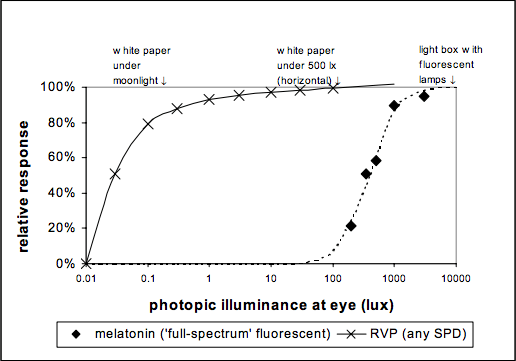When the days grow short and winter approaches, many critters prepare by storing away food or fattening up to hibernate. The return of the sun and longer days often means mating season or long migrations. The amount of daily sunshine acts as an internal clock, prompting animals via certain hormones to mate, migrate, or hibernate seasonally.
But in towns and cities across the world, humans have declared independence from the seasons. Nature still determines when we shovel snow from our driveways, go to the beach, and attend pumpkin festivals. But our offices light up at any hour and our computer screens never go blank. The majority of workers experience the same daily schedule year round. Nine to five is 9 to 5, whether it is summer or winter.
But should we? As animals that once hunted and harvested in warm months and huddled in shelters during the winter (or experienced other region-specific seasonal patterns), are we denying the seasons’ impact on our habits and productivity?
We decided to investigate. Remembering summers full of boundless energy and winters (in colder climates than San Francisco) when we wanted to curl up in bed every waking hour, it seemed intuitive that we mirror seasonal trends of hibernation and activity. Perhaps, we thought, summers are for ambitious startups and working on pet projects after work, while winters are for getting through the workday to curl up on the couch.
The prevalence of Seasonal Affective Disorder (SAD) demonstrates that the seasons can meaningfully affect our productivity and mood. Experienced in winter months as mild sadness, moodiness or anxiety, possibly accompanied by drowsiness and weight gain, it affects an estimated 1.4% of Americans in southern states to 9.7% in northeastern states. SAD is assumed to be a lingering effect of days when humans decreased their activity during winter, especially as increased exposure to bright light is an effective treatment.
Outside of the SAD population, lower amounts of sunlight do seem to result in lower productivity. A study that looked at the correlation between student test scores and the amount of sunlight in classrooms found that students in the best lit classrooms experienced progress 20% faster on math tests and 26% faster on reading tests than students in the dimmest classrooms.
The impact of sunlight, despite ever present artificial, is likely due to the relative dimness of our offices and classrooms. The setting of our circadian (daily) clocks seems to require bright sunlight – office lighting seems to only trivially affect the relevant hormones. During the winter, arriving at work in the dim morning light and leaving in darkness disrupts our circadian rhythm, which affects our health, sleep cycle, and ultimately our work performance.
The amount of light (x-axis) needed for vision versus a calibration of the hormone melatonin. RVP = relative visual performance. Source.
However, some of the most common discourse on seasonal productivity describes how it decreases during the summer. A recent New Yorker article covers the findings that people seem to work longer hours and be more productive on cold, rainy or snowy days than on sunny days. Other studies found that people are more likely to complacently agree with weak arguments in good weather. Bad weather seems to bring out our critical rigor – another project found that students give more weight to the academics of a university when they visit on cloudy days.
However, extreme heat, unsurprisingly, has a very negative effect on mood and productivity. Seventy two degrees fahrenheit appears to be the ideal temperature for productivity.
It seems the relationship between productivity and the seasons is not as simple as our image of energetic summers and hibernating winters. Our summer daydreaming seems just as powerful as our biologic reaction to decreased daylight hours. Moreover, the research suggests a mix of what we can and cannot control. We can set the thermostat in many offices to 72 degrees year round, but artificial lighting seems insufficient to set our circadian rhythm. That said, there is no shortage of research advocating that people avoid using electronics at night as their light can disrupt our melatonin levels and “delay bedtime.”
Researchers simply don’t seem to understand how the seasons affect humans with terrible certainty. Dr. Thomas Wehr, who studies human photoperiodicity (the effect of the length of the day), concedes that he was “astonished to learn how little work had been done in the area.” Dr. Wehr’s work, chronicled in a New York Times article, suggests that humans have tamed their seasonal variations – at least in half the population.
In one experiment, his team took a group of young men who lived in Washington and recreated the conditions of a human living through a winter absent of artificial light. For 14 hours a day, the men relaxed and slept inside dark, windowless rooms. The researchers found that:
The men slept only about an hour more than normal, but the slumber was spread over about a 12-hour period. They slept for about four to five hours early on, and another four to five hours or so toward morning, the two sleep bouts separated by several hours of quiet, distinctly nonanxious wakefulness in the middle of the night. The early evening sleep was primarily deep, slow-wave sleep and the morning episode consisted largely of REM, or rapid eye movement, sleep characterized by vivid dreams. The wakeful period, brain wave measurements indicated, resembled a state of meditation.
Their results jive with historical accounts, which are full of seemingly puzzling descriptions of first and second sleeps. Due to the meditative feeling – likely caused by the hormone prolactin, which is associated with sleep and rest – the period in between periods of sleep was a popular time for reflection. Ben Franklin enjoyed spending it reading naked in a chair. Others chatted, smoked, or had sex.
By monitoring the physiology of the participants during and after the study, Dr. Wehr documented the dramatic changes in their levels of prolactin and melatonin as they switched from 14-hour nights to the modern 8-hour night.
So while humans clearly can react to seasonal changes just as strongly as migrating birds, our standardized schedules and artificial light seem to inhibit those changes. A follow up study looking at the levels of relevant hormones in men during the summer and winter found no significant seasonal differences. But when the researchers put women through the same ordeal, they found that they did express seasonal variations. Their internal clocks seemed to keep track of the seasons just as well as animals or pre-modern humans. What that means exactly for how men and women live through what Dr. Wehr calls the “endless summer” of year round 16-hour days is not well understood.
In sum, we are less energetic and productive in the winter, but also potentially more intelligent and critical. Yet artificial lighting has supposedly created an “endless summer” that makes men independent of seasonal change, but not women.
When it comes to how the seasons affect our productivity, there are no easy answers.
This post was written by Alex Mayyasi. Follow him on Twitter here or Google Plus. To get occasional notifications when we write blog posts, sign up for our email list.





